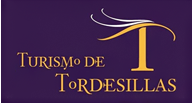Isabella: Madrigal, 1451 - Medina del Campo, 1504
Ferdinand: Sos, 1452 - Madrigalejo, 1516
The Catholic Monarchs is the title with which are known historically Queen Isabella I of Castile and King Ferdinand II of Aragon, granted by the Pope Alexander VI.
The Catholic Monarchs were the last effective representatives of Dynasty Trastámara in the kingdom of Aragon and Castile. In the times of their reign, the Court was mobile. It spent long seasons at the Royal Palace of Tordesillas. The Catholic Monarchs reign has been considered to be the unit's point of departure and of Spain greatness. Isabella was the daughter of John II of Castile, whereas Ferdinand was a son of John II of Aragon. They were first cousins, once removed.
When John II of Castile dies, Henry IV (Isabella's brother), succeedes him. Henry's weakness makes doubt even about his daughter's legitimacy (Joanna), who was said to be Beltran de la Cueva's daughter.
Nobility put pressure on him and he appoints heiress his sister Isabella, in "Concordia de los toros de Guisando" in 1468. She was disinherited later when she married the Infante de Aragón.
When Henry IV died, a war to the throne begins between Isabella y Joanna la Beltraneja. Portuguese troops supported Joanna who was married to the portuguese king Alfonso V and the troops of Aragón supported Isabella. In 1476, Ferdinand's troops, the catholic monarch, leave Tordesillas Royal Palace where they were quarted to win the troops of Alfonso V in the battle of Toro. Finally, the troops of Isabella and Ferdinand end up by winning portuguese troops (1479).
Ferdinand, the catholic monarch, is appointed heir to the throne of Aragón when his brother, Charles de Viana, died in 1461. He comes to the throne in 1479 as his father died. Besides, the same year, the dynastic unity between Aragón and Castile takes place.
The Reconquest finished with the occupation of Granada in 1492. They supported Cristóbal Colón when he went in search of an alternative route in order to arrive in India, what will involve a never ending source of new wealth for the kingdom as well as a b foreign expansionism.
In 1494, only two years after the discovery of America, the Catholic Monachs and John II of Portugal signed the Treaty of Tordesillas.
In 1504, Isabella la Católica dies in Medina del Campo. Because of that, her daughter, Joanna, became the heiress to the throne. The Queen's will stated that Ferdinand assumed regency if Joanna would find herself disabled to reign. However, castilian nobility prefered the privileges they were offered by Philip el Hermoso. His premature death made Ferdinand to be required in Castile again so that he exercised the throne's regency instead of his daughter Joanna.
When Ferdinand, the Catholic Monarch, died in 1516, his grandson Charles I inherited the Spanish throne.

